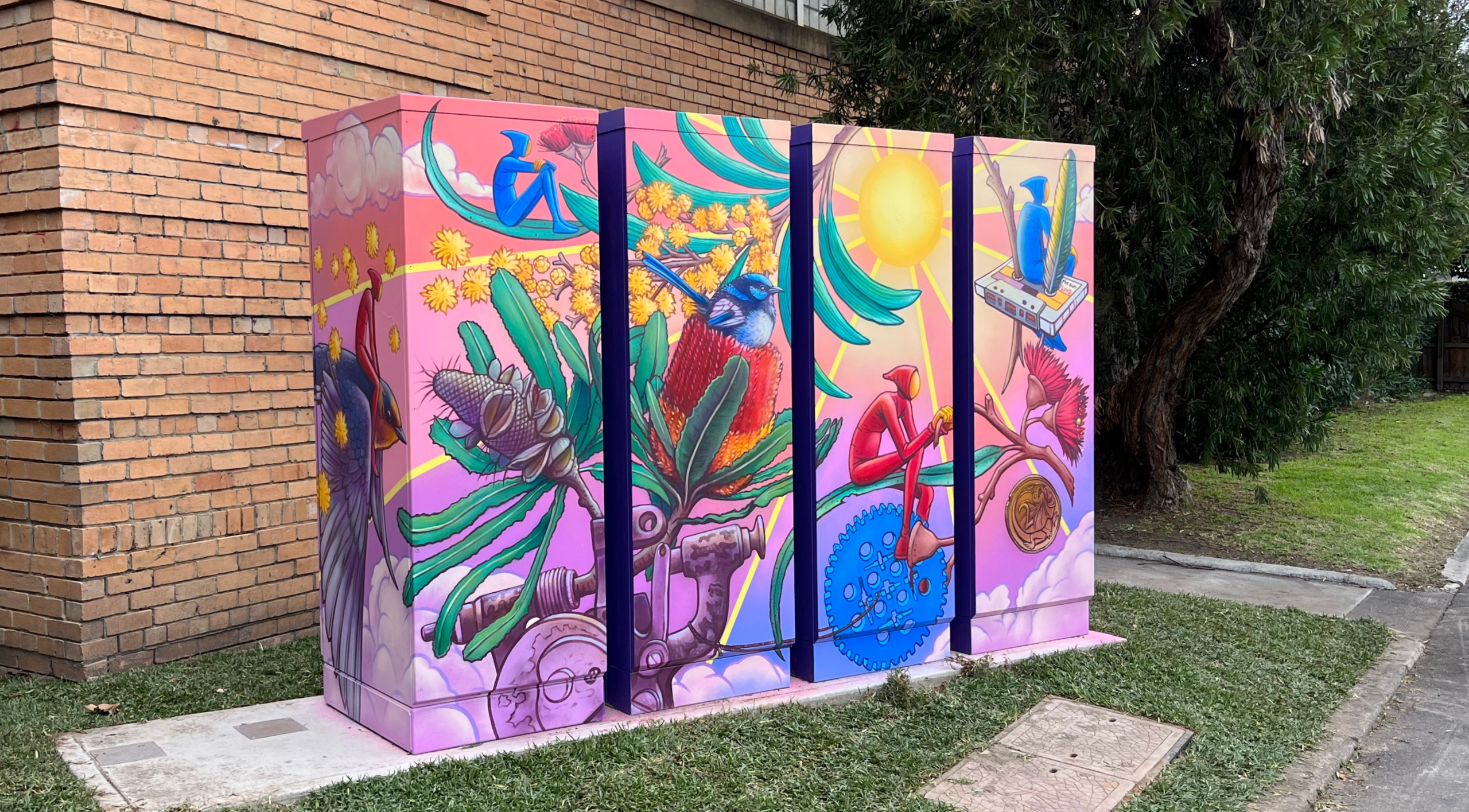A community battery is a mid-scale energy storage unit which is embedded in the electricity network and allows for shared energy storage.
They are usually about the size of 4 large fridges and can provide numerous services to residents, communities, and the electricity grid as a whole. Community batteries are a subset of ‘neighbourhood batteries’, a broader term referring to similar scale batteries, but which do not necessarily directly involve or benefit the community.
 Photo of our Fitzroy North community battery, the first inner-urban community battery in Australia.
Photo of our Fitzroy North community battery, the first inner-urban community battery in Australia.
Essentially, community batteries act as a ‘solar sponge‘ – storing excess clean, cheap solar energy which is generated by rooftop solar arrays within the community. It stores this energy for later use in the day when demand is higher and the sun no longer shining. This time-shifting of energy allows local residents to use more of the renewable electricity they generate during the day, at the times when it is most needed.
Our community batteries are designed to benefit the neighbourhood as a whole, allowing the wider community to access and store renewable energy whether or not they have solar panels installed. Our community batteries provide power to everyone connected to the same part of the sub-network (or LVN – a ‘low-voltage network’), no matter which energy retailer they use, and without having to sign up or pay a subscription fee.
The Yarra Energy Foundation are leaders within the community battery space. We can help with all aspects of community battery projects, from research and feasibility studies, to management and implementation. You can read more about our community battery services here.

